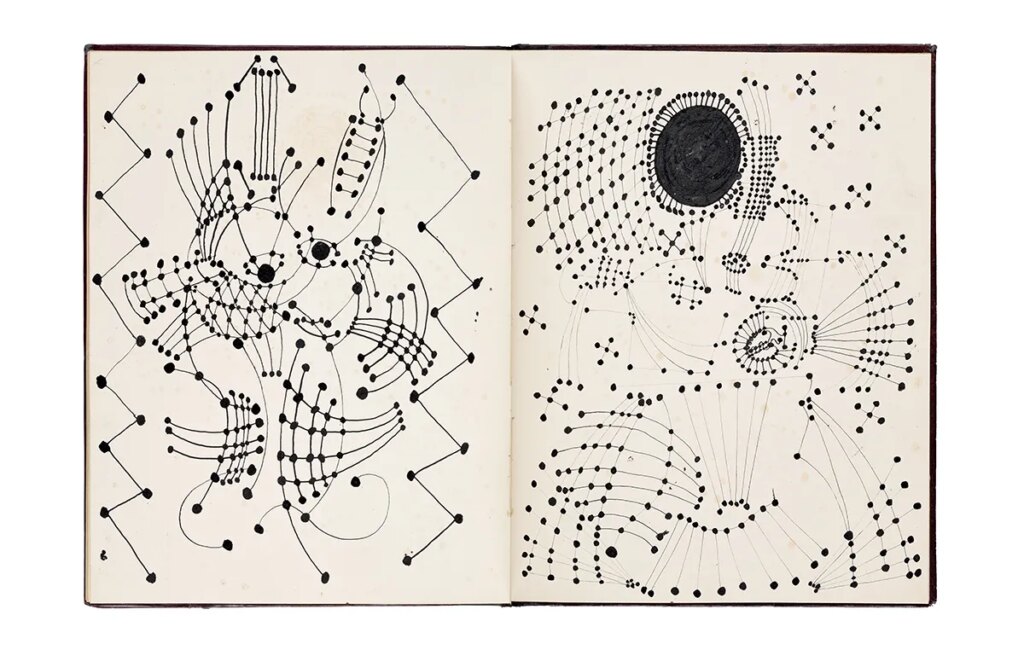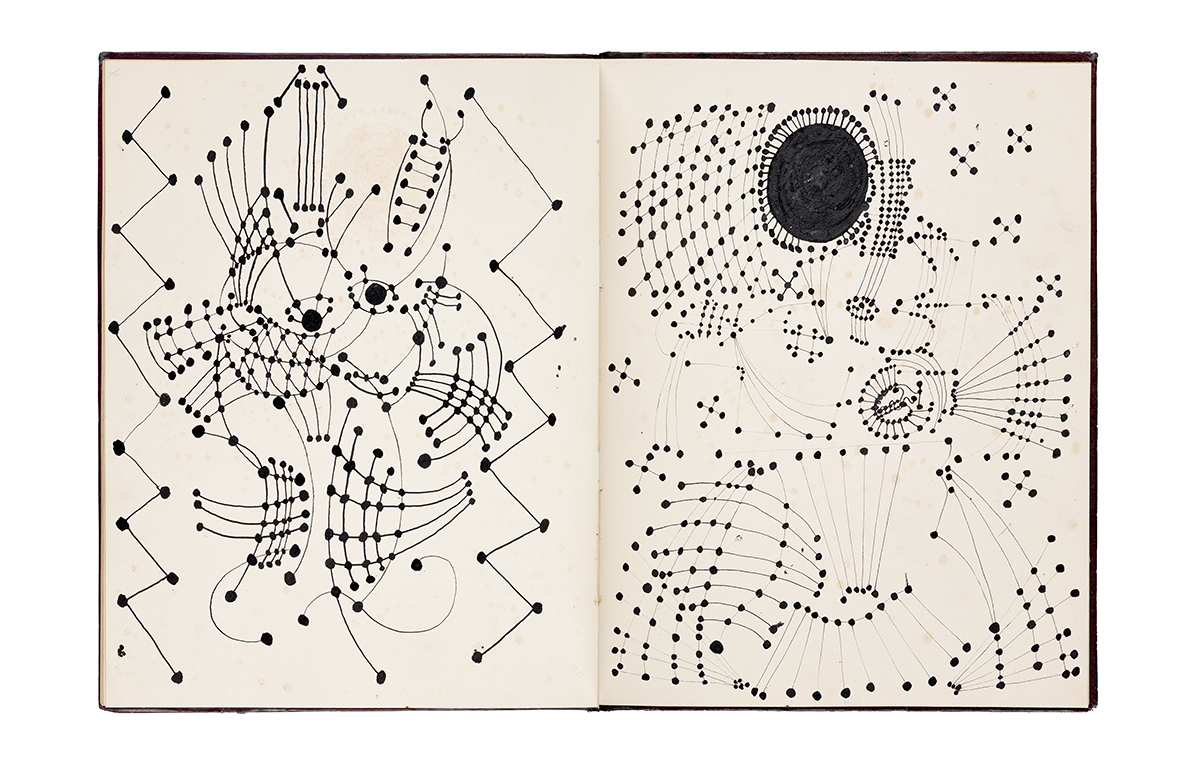
As visitors flock to France for the art fair Paris+, many museums and galleries are mounting must-see exhibitions. Alongside a Rothko blockbuster at the Fondation Louis Vuitton and a vast Sophie Calle project for the Musée Picasso, one such exhibition is “Picasso: Endlessly Drawing,” a massive survey of works in that medium at the Centre Pompidou that opens on Wednesday.
The exhibition showcases the famed Spanish painter’s drawings and engravings, including graphic work and private notebooks. The offerings range from early studies to final works, from figurative portraits to highly abstracted images of people and animals. Mounted to mark the 50-year anniversary of the artist’s death, the show is meant to provide new insight into the artist’s well-known works and process through his drawing practice.
Picasso has always been a controversial figure for his misogyny and manipulative tendencies, and many exhibitions mounted this year aspire to reassess him for that reason. But this show instead focuses on his formal innovations, viewing him as a key figure within the history of modern art. Before visiting, take a sneak peak at some of the drawings in the show.
-
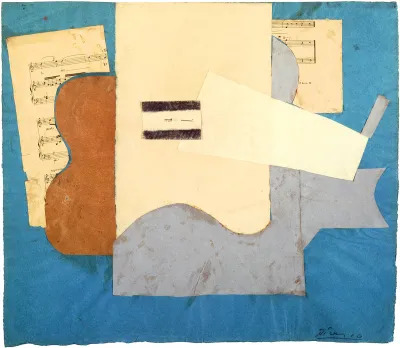
Image Credit: Courtesy Centre Pompidou Pablo Picasso: Sheet Music and Guitar, 1912, charcoal and paper cut out pasted and pinned on paper, 16 by 19 inches.
During his Cubist period, Picasso created collages such as this one, in which a guitar appears alongside sheet music denoting the sounds it may have produced.
-
![Pablo Picasso: Self-portrait [Montrouge], 1918, graphite and charcoal on paper, 25 by 19 inches.](http://www.sgfara.org/wp-content/uploads/2023/10/Autoportrait.jpg)
Image Credit: Courtesy Centre Pompidou Pablo Picasso: Self-portrait [Montrouge], 1918, graphite and charcoal on paper, 25 by 19 inches.
A simple line drawing that the artist drew provides a perspective on how he may have seen himself.
-
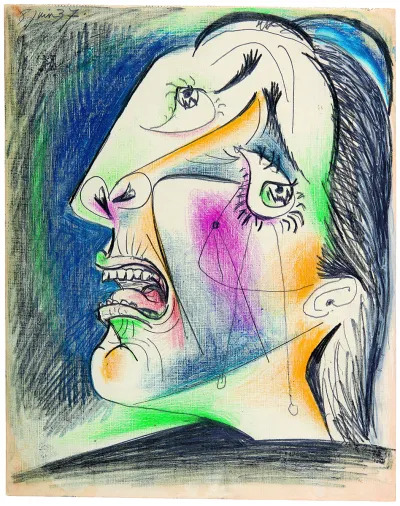
Image Credit: Courtesy Centre Pompidou Pablo Picasso: Weeping head (V). Postscript to Guernica, 1937, graphite pencil, gouache, and color stick on canvas, 11 by 9 inches.
After finishing his black-and-white 1937 masterpiece Guernica, which depicts the German bombing of the Spanish city, Picasso made this multimedium drawing of a crying woman’s head.
-
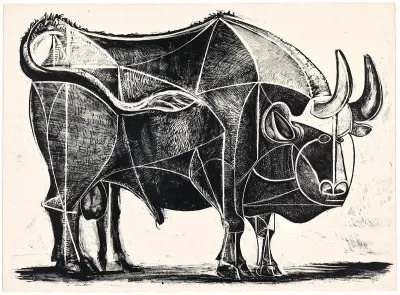
Image Credit: Courtesy Centre Pompidou Pablo Picasso: The bull, IVth state, 1945, ink wash drawing, feather, and stone scraping on paper, 13 by 17 inches.
Picasso made many drawings of bulls, animals which fascinated him. He made some in detail and then continued to distill them to their simplest forms.
-
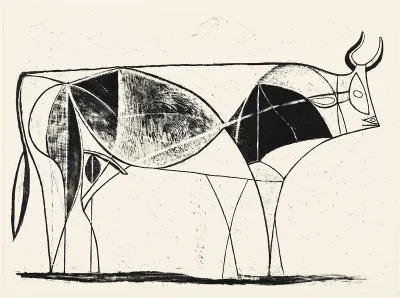
Image Credit: Courtesy Centre Pompidou Pablo Picasso: The bull, VIIIth state, 1945, ink wash drawing, feather, and stone scraping on paper, 13 by 17 inches.
Unlike the previous drawing, this bull is even starker, with its far only partially visible.
-

Image Credit: Courtesy Centre Pompidou Pablo Picasso: The bull, XIth state, 1945, ink wash drawing, feather, and stone scraping on paper, 13 by 17 inches.
This bull drawing is even more minimal, with no fur at all. Its horns appear as a single curved line.
-
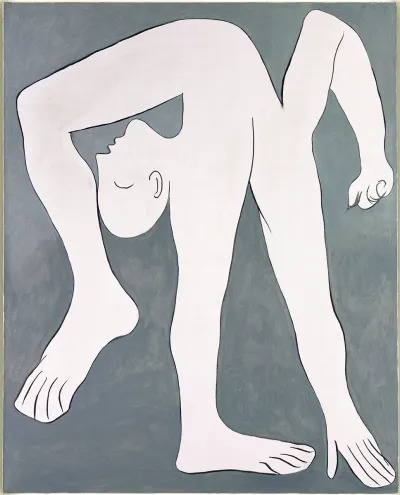
Image Credit: Courtesy Centre Pompidou Pablo Picasso: Acrobat, 1930, oil on canvas, 64 by 51 inches.
The artist abstracts the human figure, pushing it to the edges of the frame in an acrobatic pose.
-

Image Credit: Courtesy Centre Pompidou Pablo Picasso: Head of a faun, 1937, ink and wax pencil on paper, 11 by 8 inches.
Fauns, mythological figures that Picasso revisited in many works, are often seen in narratives about love and lust. Picasso sometimes appeared to identify with these creatures.
-

Image Credit: Courtesy Centre Pompidou Pablo Picasso: Harlequin, 1923, oil on canvas, 51 by 38 inches.
This piece shows Picasso’s process as he worked an intricate drawing into a painting, providing greater insight into how he created works from start to finish.
-
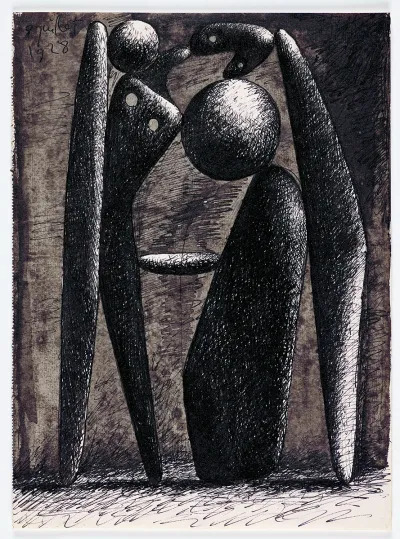
Image Credit: Courtesy Centre Pompidou Pablo Picasso: Swimmers, 1928, ink on paper, 12 by 9 inches.
In this piece, the artist abstracts the human form into shaded interconnected shapes.

